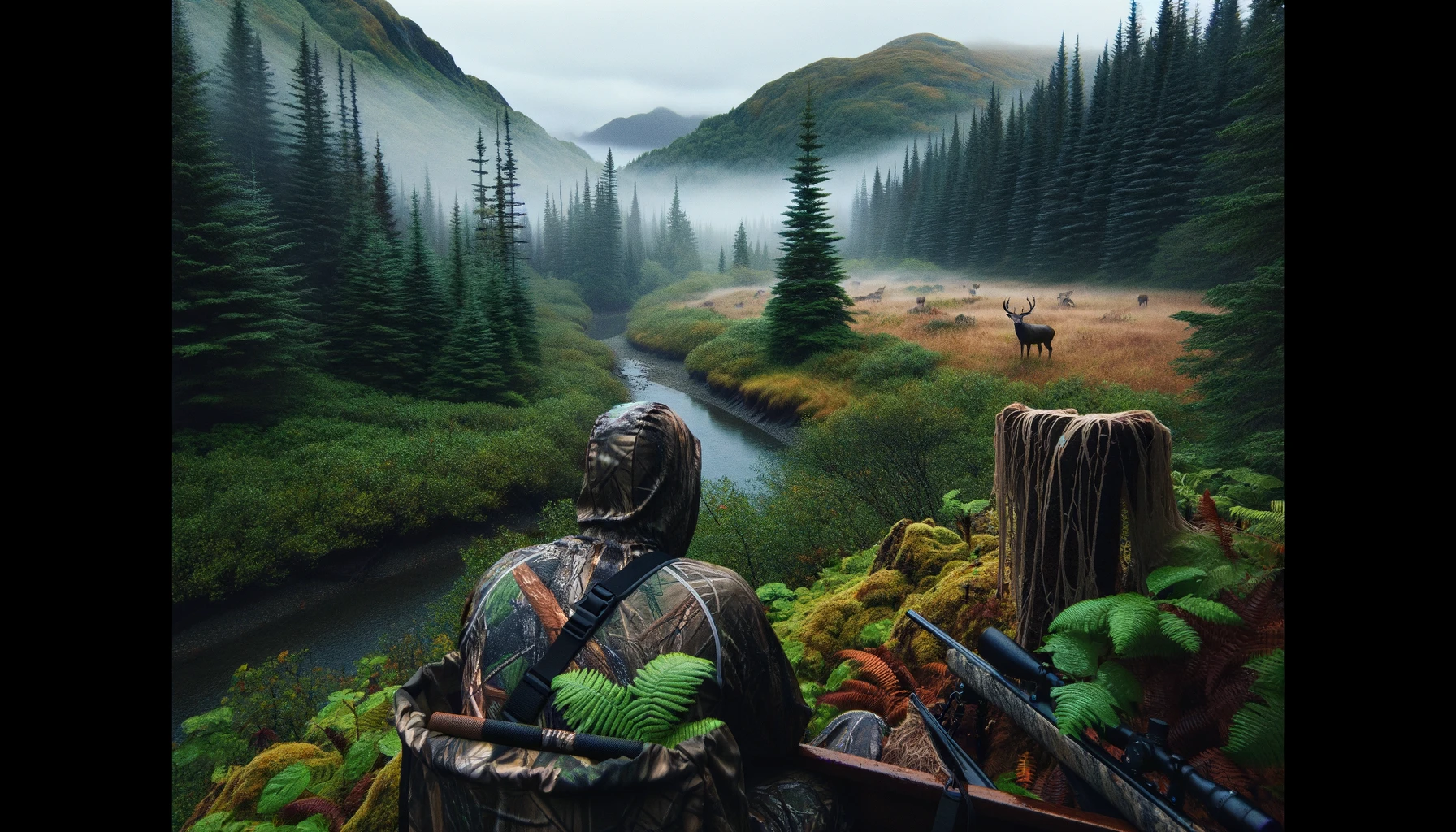
Table of Contents
Hunting during the rut in Southeast Alaska offers an unparalleled adventure set against the backdrop of the region’s majestic forests and rugged terrain. The rut, or mating season, for deer and other game, presents unique challenges and opportunities for hunters. This guide delves into essential tips and strategies to help you navigate the complexities of rut hunting in this wild and wet climate, ensuring a rewarding experience in one of North America’s last frontiers.
The rut typically occurs in late October through November. This period is characterized by increased deer activity as bucks are on the move, searching for does and defending their territories.
Bucks become less cautious and more aggressive during the rut, making them somewhat easier to spot. They frequently use rubs and scrapes to mark territory and attract does, which can be key indicators for hunters.
Expect rain and prepare accordingly with waterproof clothing, boots, and gear bags. Moisture-wicking layers are essential to stay dry and warm.
The dense forests and rugged terrain of Southeast Alaska necessitate reliable navigation tools. A GPS device, topographic maps, and a compass are must-haves.
Choose a rifle or bow that you are comfortable with and is suitable for the terrain and the game. Waterproof cases and fast-drying oil can help protect your equipment from the damp environment.
Utilize the increased visibility provided by the rutting activity to spot and stalk bucks. Move quietly and keep downwind to avoid detection.
Rut-specific calls and antler rattling can be effective in drawing out aggressive bucks. However, use these techniques sparingly to avoid spooking the animals.
Identify active rubs and scrapes as these are hotspots for buck activity. Setting up downwind from these signposts can be an effective strategy to intercept a buck.
Southeast Alaska is bear country. Carry bear spray, know how to store your game properly, and be aware of your surroundings at all times.
Practice ethical hunting by taking clean shots and respecting local regulations. Understand the importance of conservation and the role hunters play in maintaining healthy wildlife populations.
By integrating these advanced tactics and considerations into your hunting strategy, you’ll be well-equipped to navigate the challenges and embrace the opportunities presented by rut hunting in Southeast Alaska. Each element, from understanding deer sign language to optimizing your physical and mental preparation, plays a crucial role in crafting a memorable and successful hunting experience in the breathtaking wilderness of the Last Frontier.
Rut hunting in Southeast Alaska is an adventure that tests your skills, patience, and resilience. By understanding the unique behaviors associated with the rut, preparing for the wet and wild conditions, and employing thoughtful strategies, you can increase your chances of a successful hunt. Embrace the challenges and immerse yourself in the incredible natural beauty and wildlife of Southeast Alaska.
Air drying is essential. Use covered areas or heated spaces when available. Portable boot dryers can be a game-changer for wet footwear.
Regularly clean and oil your firearm with water-displacing lubricant. Keep it in a waterproof case when not in use to protect against moisture.
Yes, but be sure to check the specific season dates and regulations for each species. Always carry the necessary tags and licenses for the game you’re hunting.
Layering is key. Start with a moisture-wicking base layer, add insulating layers, and top with a waterproof, breathable outer layer. Keep extra clothing on hand to swap out wet garments.
Use a GPS device in conjunction with traditional navigation tools like a map and compass. Familiarize yourself with the area during daylight, and always let someone know your planned route and return time.
Gun owners regularly hear that maintaining their firearm is essential, but many still wonder exactly…
When handling any firearm whether it’s a hunting rifle, shotgun, handgun, or even a crossbow—reliability…
Jerking the trigger is one of the most common accuracy problems pistol shooters face. Whether…
Keeping your handgun clean is one of the most important responsibilities you have as a…
Archery has evolved dramatically over thousands of years, yet one debate continues to spark curiosity…
When you’re setting up a long-range rifle scope, one of the most important decisions you’ll…
This website uses cookies.